30 min reading time; ~6300 words
Anything worth doing is worth doing poorly… because doing it poorly is better than not doing it. — redheadhatchet

This quote is one I read on Tumblr a few years ago, immediately printed out, and taped to my wall (imperfectly of course, as you can see from the image to the right). It’s based on a quote by G. K. Chesterton, a philosopher from the early 20th century, who said “Anything worth doing is worth doing badly.”
Honestly, I like the updated version better.
Finding the quote finally put words to a driving force in my life. For me, the core message is about consistency and simply starting. To tackle important goals, you need the willingness to jump in and figure things out as you go. Take risks according to your tolerance of course, but don’t be afraid to start.
I feel this has helped me grow, and I’ve learned to trust myself more. It’s part of the reason that I jumped into running this event as well.
Last October, on a long drive home, I had the idea to start a Renaissance Faire style event. The idea felt exciting, and a little overwhelming at first, but having this mindset anchored me, making the risk seem worth taking. As an engineer and first-time event planner, I knew the learning curve would be steep but rewarding.
After thinking it over, I seized on an idea I thought workable in the budget and time I had available, a Viking-themed feast. And thus began an almost year-long journey of trying to pull an event out of thin air.
Attention: This post is going to be a long one. If you want to get to the lessons, here’s a link to jump you directly to them.
So How To Get Started?
First, I contacted a friend of mine, a chef, and sat down with him over supper to talk about the idea. Since the whole idea at the time was centered around a Viking themed feast in the woods, there were going to be a lot of logistics to pull off, the core of it being cooking for a potential audience of 120 people, and being able to serve it at a remote location.
I was lucky, because he was on board immediately, and with his credentials and experience, I was confident in his ability to pull off the best food we could within those constraints. Plus, his enthusiasm for the idea was immediately apparent, because it gave him a new creative outlet (the answer was very much “Vikings?! Absolutely yes!”).
So, with that buy in, I started thinking very seriously about the details of the event. We worked out that we could likely accommodate 120 guests, with a rough budget of $45 per seat in wholesale food costs, between him and another chef.
This idea that was very hand-wave suddenly crystalized as something that was potentially within reach. During our conversation, it became apparent to me that I also needed to have something to make the event more than just eating themed meals in the woods.
I contacted another friend, who runs a local roleplay group, and asked him if his group might be interested in playing the part of Vikings in an event like this, to which I got another yes.
The First Draft
Sitting down with a spreadsheet (and Google, and reddit), I started plotting out the logistics I thought I would need for the event, including some very low quality cost estimates. The first draft of this idea was:
- Costumed actors who would be mixed into the guest tables, providing the Viking atmosphere, telling stories, and otherwise being Vikings.
- A musician to provide appropriate music through supper (and potentially after).
- A Viking feast, with a menu of dishes that either were period accurate or paid homage to food (and drink) of that era and culture.
- Axe throwing, because what Viking event doesn’t have axes!
With some rapidly developing research and planning, this budget changed a lot very early, and along with the idea, started filling out. It’s amazing how much goes into even a simple event logistically. By mid-Nov, I had developed a backstory for the event, filled out a lot of the initial costs for the logistics, and the plan was starting to take shape.



We had several volunteers (including a seamstress), and were starting to have regular meetings to work out various ideas for the event itself. I own several acres of land, so I was trying to work out the logistics for getting that many people down a dirt road to it. As well, since the land was raw, I was now scouting for a site to clear and hold the event (you can see more details of the surveying work I did for this in my article about surveying my land).
It was becoming apparent as I worked through planning that there needed to be more to the event. Food, music, but what else? While I was trying to work out the event details, the tentative budget was getting more detailed, and large.
Oh and also by the end of December, I owned 42 web domains related to the event. I won’t reveal the best one that I got yet, but needless to say, I was very surprised it was still available!
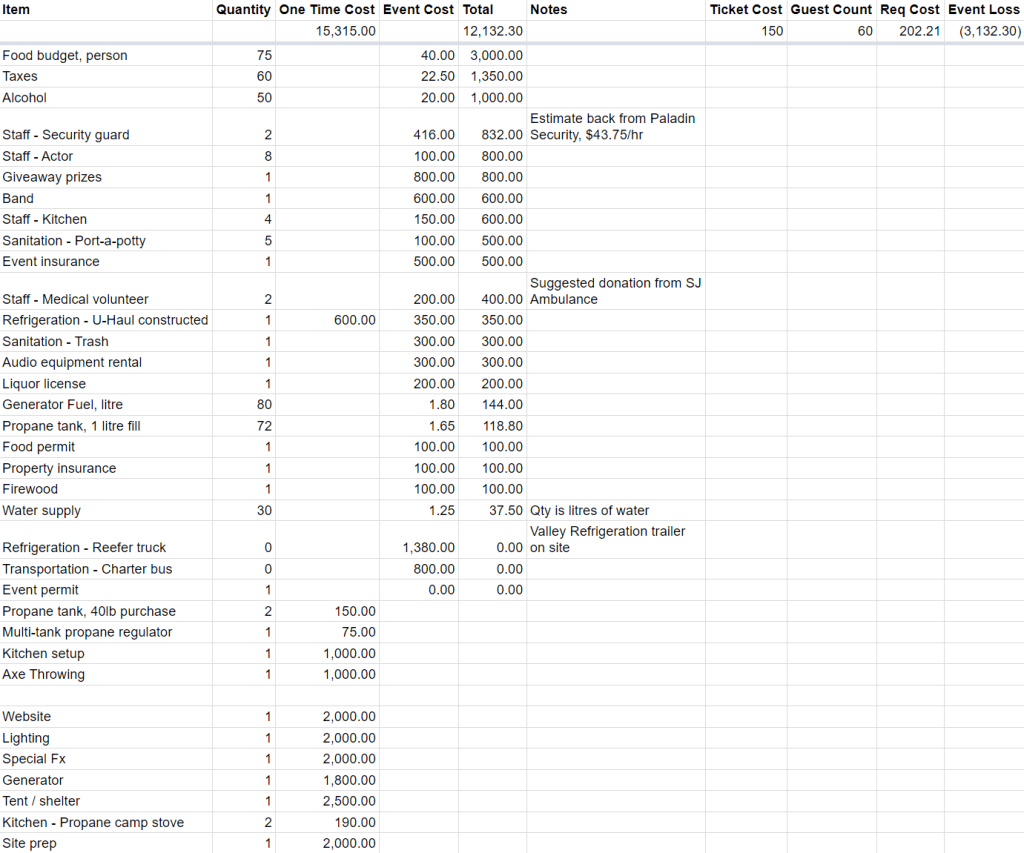
Goal Setting
By this point, my expectations for what I wanted the result to be were finally set.
My goal wasn’t profit but rather learning—success meant understanding what worked and what didn’t.
While I had plenty of support from some of my friends, and some of the small business people I talked with, some people later told me they couldn’t understand my goal, and even one that very specifically said that there was no way they could be motivated to volunteer to help with the event because my goal was completely counter to how they worked.
As an engineer meanwhile, this goal made perfect sense to me. For the low cost of what would eventually be 90% of my budget for the event, I was buying an education (and a whole bunch of hard assets). No matter how the event eventually went, success wasn’t about profit, but learning how it could go good, or very bad. I understood the financial risk, but saw it as an investment in experience.
I wanted to fly the plane, to see that I could fly the plane. Even if it crashed on takeoff, getting there, and being able to pull lessons from that was my value.
Into 2024
At the beginning of 2024, I registered a federal corporation, and then a provincial corporation in New Brunswick, since that is where I would be operating from. These processed turned out to be rather easy, and Unusual Events Corp. went live. I started buying supplies immediately, and working on my first major wood project, a Viking tent.
Along with this, the event had evolved to include games and we were now into testing dishes. Things were moving at a rapid pace, and yet, still slow, since as it turns out, making physical things takes a lot of time and effort. Especially when it comes to turning 30 yards of fabric into a tent.


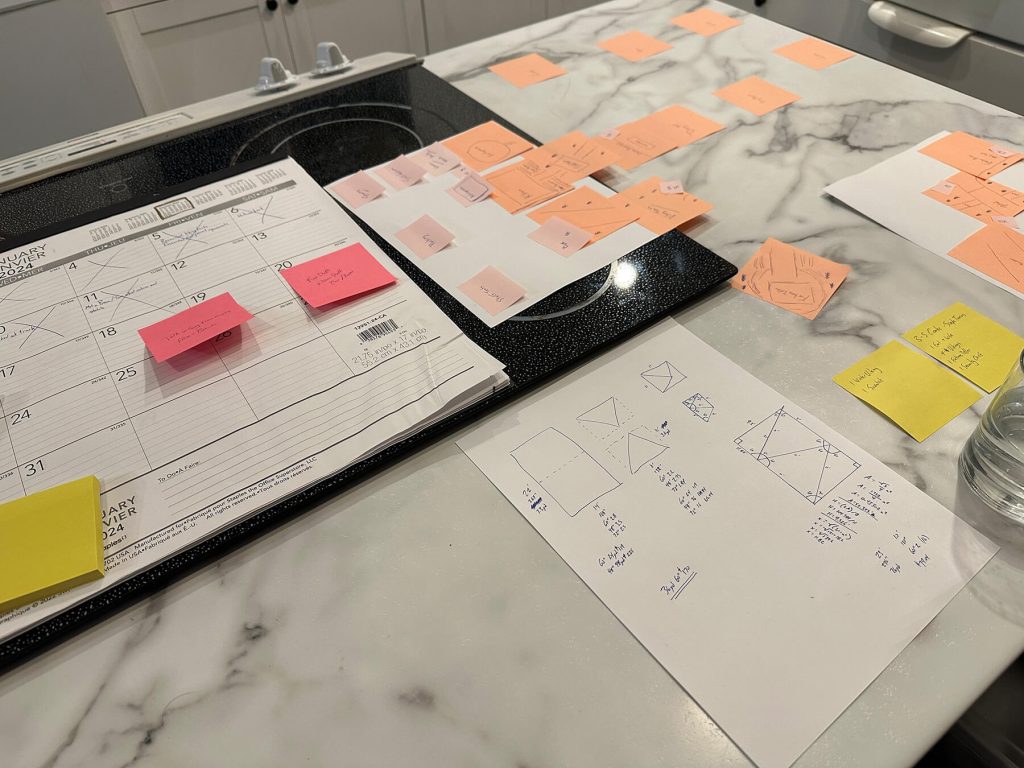
At the same time, I was starting to talk with a property owner near where my land was, because I was worried that the logistics of running this event on my land were going to be too challenging to make it work.
By February, I had acquired a smelter, and was experimenting with copper. I had also hired a graphic designer to produce a logo for the fictional company running the events, Outland Gate Adventures. My seamstress had managed to get a working tent made out of the canvas I had gotten, and we pulled together some initial promotional shots.

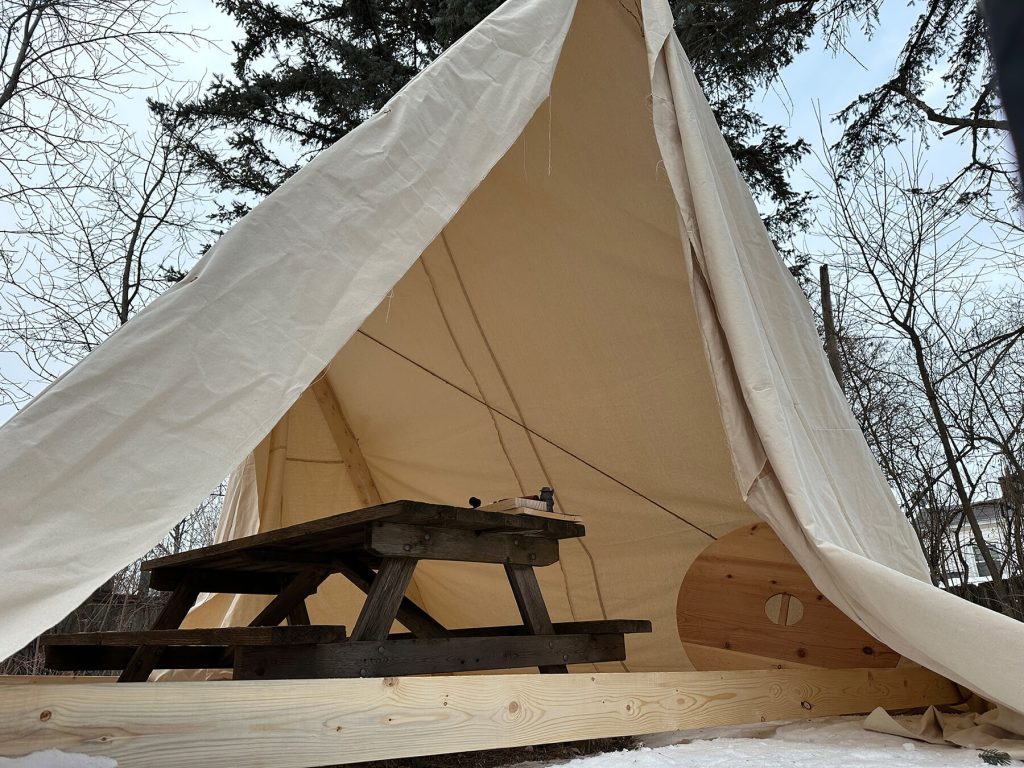
In March, I made the decision to commit to the event site I had been scouting, because the logistics for getting that many people to my land were out of the question. I got back to copper smelting for some of the props, as well as started mapping the event site so that I could plan with a solid map in hand.
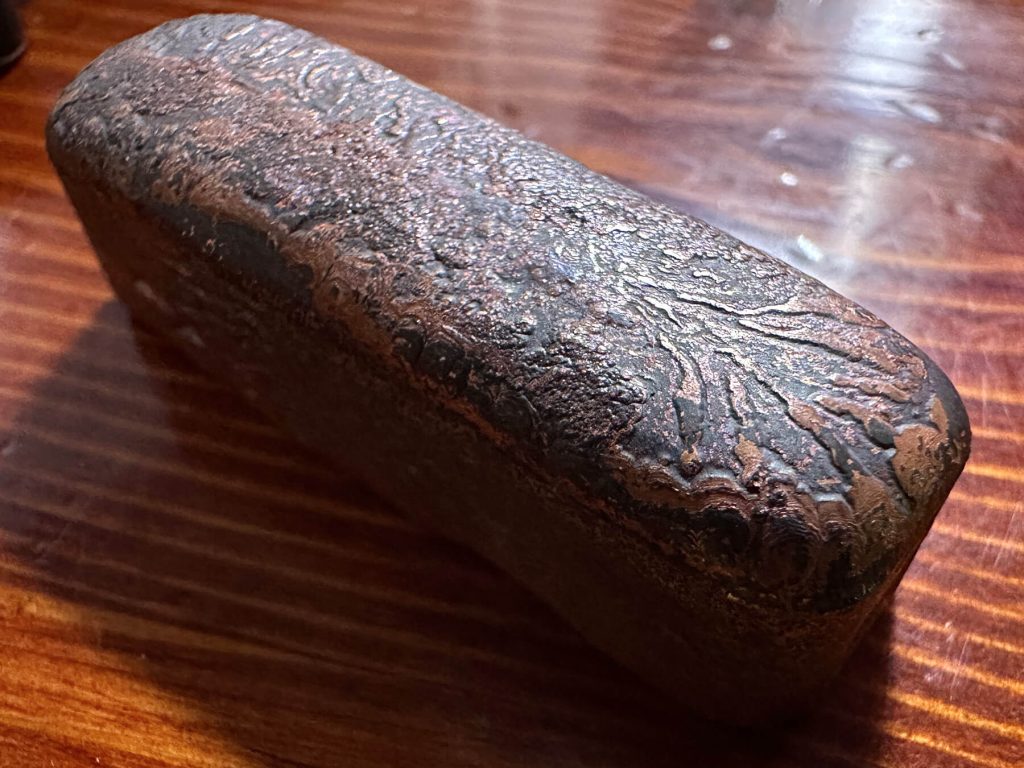
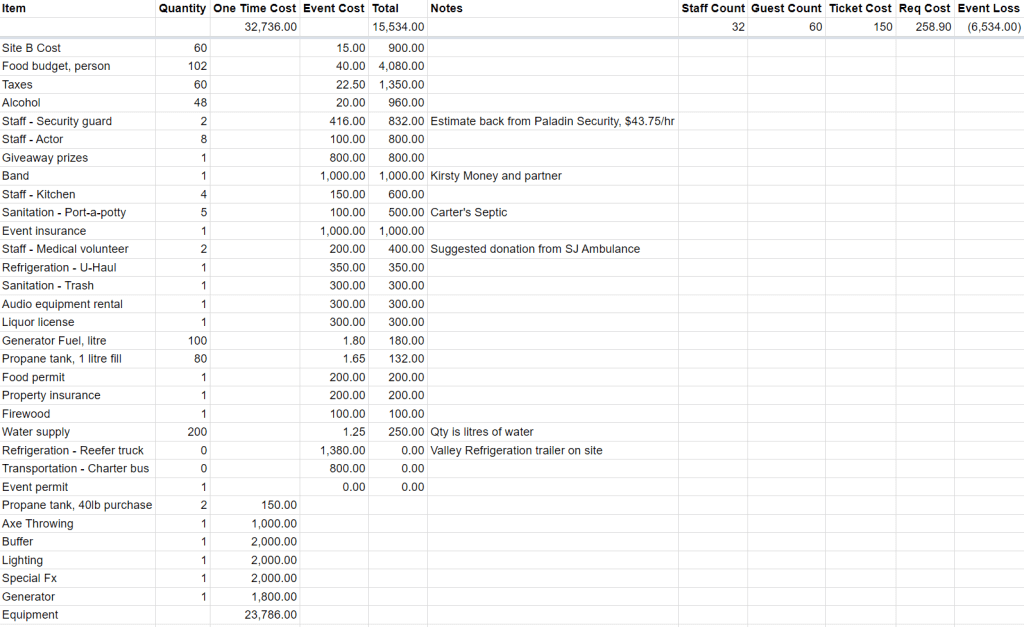
I was also working hard to tune the budget, starting to work out the costs associated with running a kitchen, and negotiating with a performer I felt would suit the event. Planning meetings were a regular occurrence, as we met weekly to talk about a wide variety of things, from props and costumes, to what actors were going to do what.
Tracking The Casting Call
One of the big things that I started working on was the casting call. March 17 I created a Google Form for signups, and made several versions of a poster to advertise that we were looking for actors. Here you can see the evolution of the design, with the goal of having a poster that could be scanned from your car as you were sitting at a stop light.

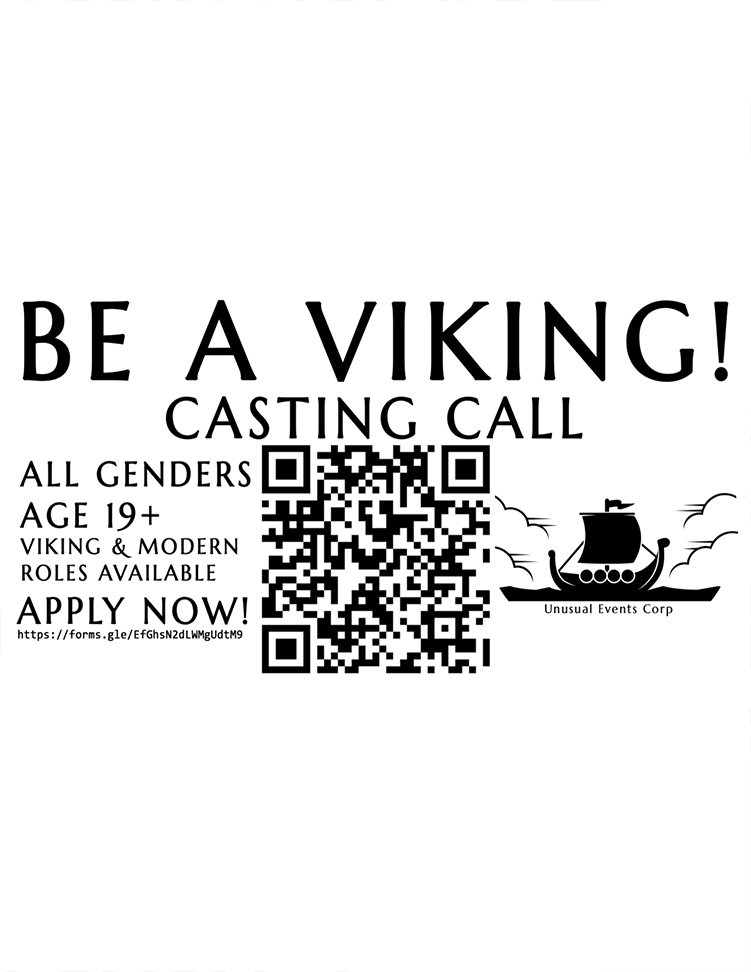

In the middle of April, I had a bright idea as I was designing a new version of the casting poster. Since I was an engineer, why wasn’t I trying to track the number of eyeballs I was getting on my posters? After a few hours, I had a solid working redirect service, which was designed to track every hit, and then send them on to the casting call form.
With the first version, I would just print a batch with the same code and put them out, recording their GPS coordinates for later analysis. By the next version, I was creating individual tracking codes for every poster, so that I could pinpoint exactly which one was getting hits.
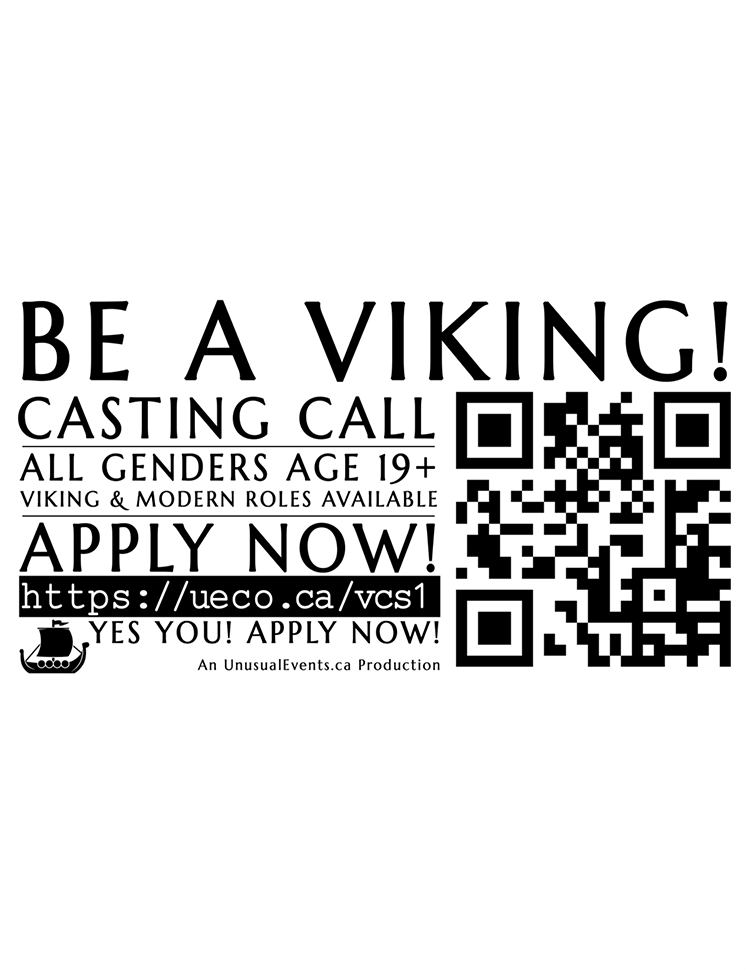


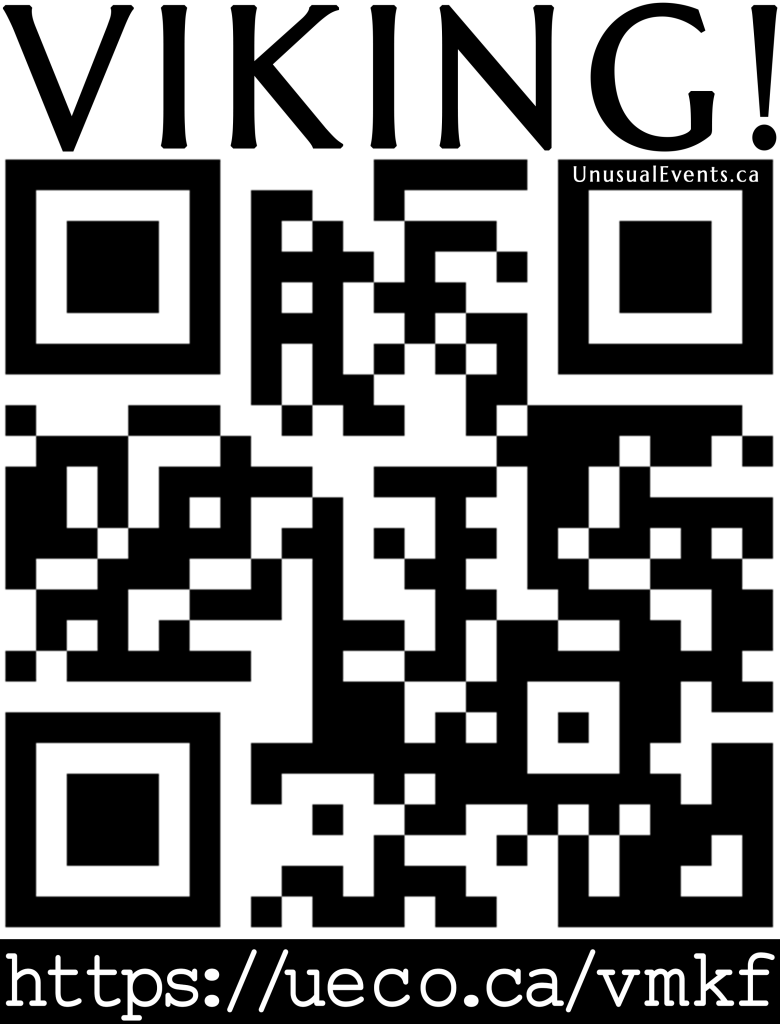
The data collected included which version of the poster they scanned, as well as the location, date and time. Later, I used this data to inform the placement of my official event posters.
I didn’t actually replace the latest version of the casting poster, because as it turns out, simple designs can work great, and a giant QR code with the word VIKING! above it gets a ton of hits, which I was able to direct to the official site.
Promotional Focus
Now, we’re into April. I’ve ordered props, and have gotten deep into the menu and organization. Signups are going well for the casting call, so far it looks like an achievable event. By the end of the month, we’d taken and posted quality promo shots to Instagram, and completed the first round of negotiations with a nyckelharpa player, whose traditional music fit perfectly with the event’s vibe.
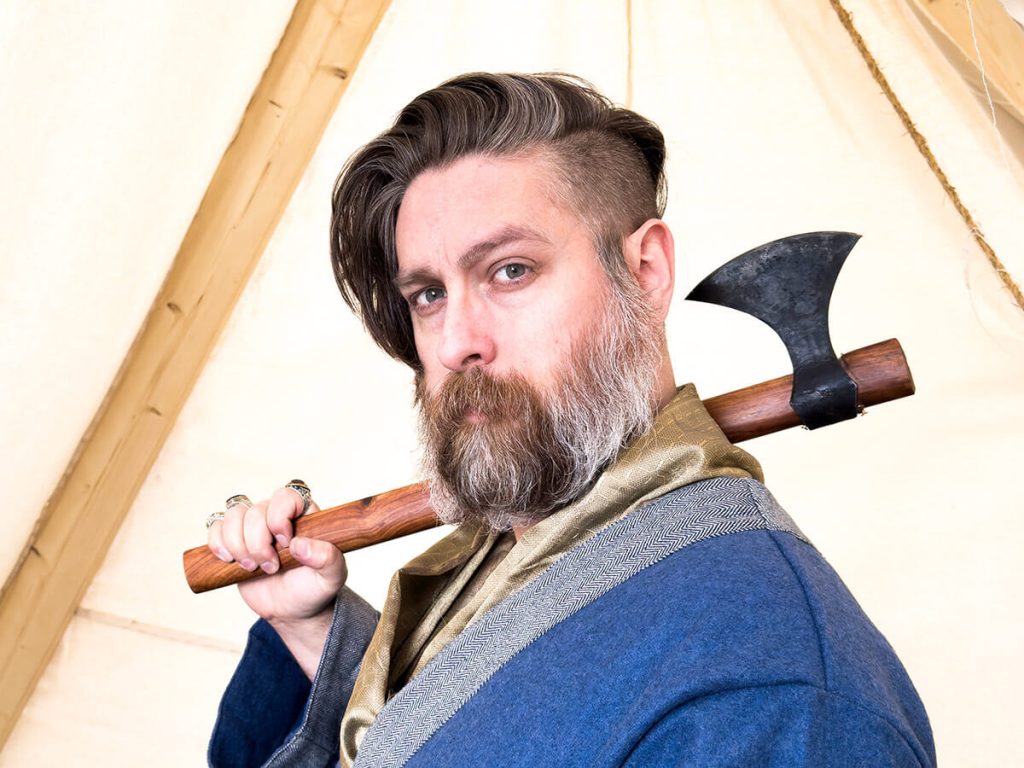
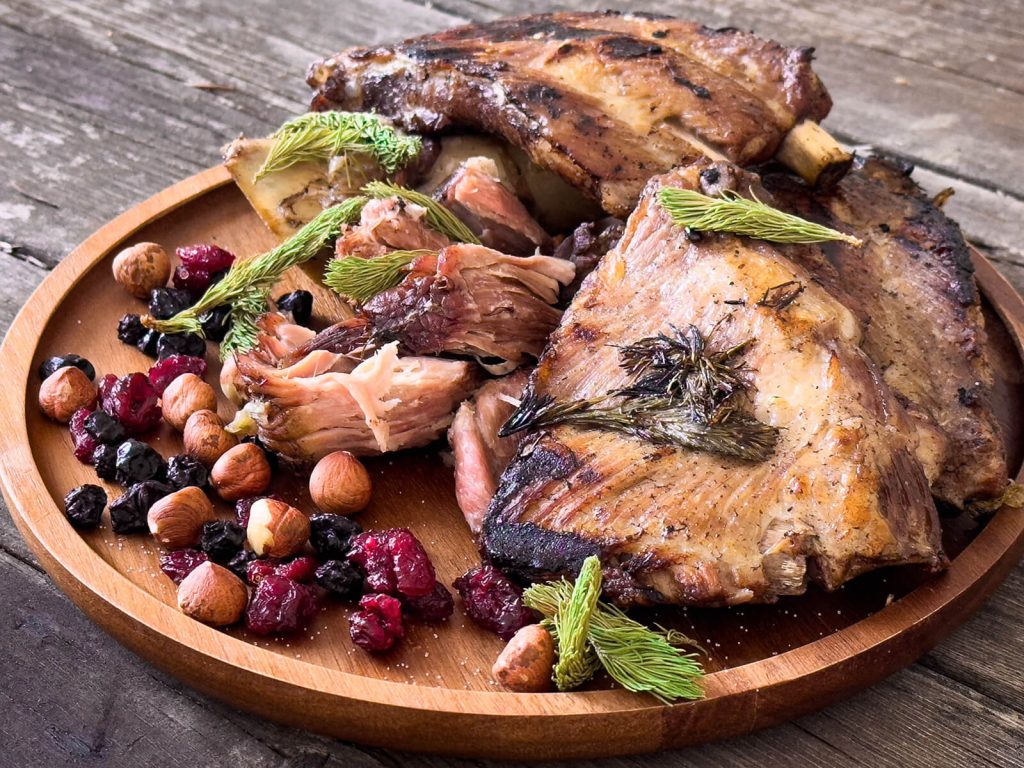
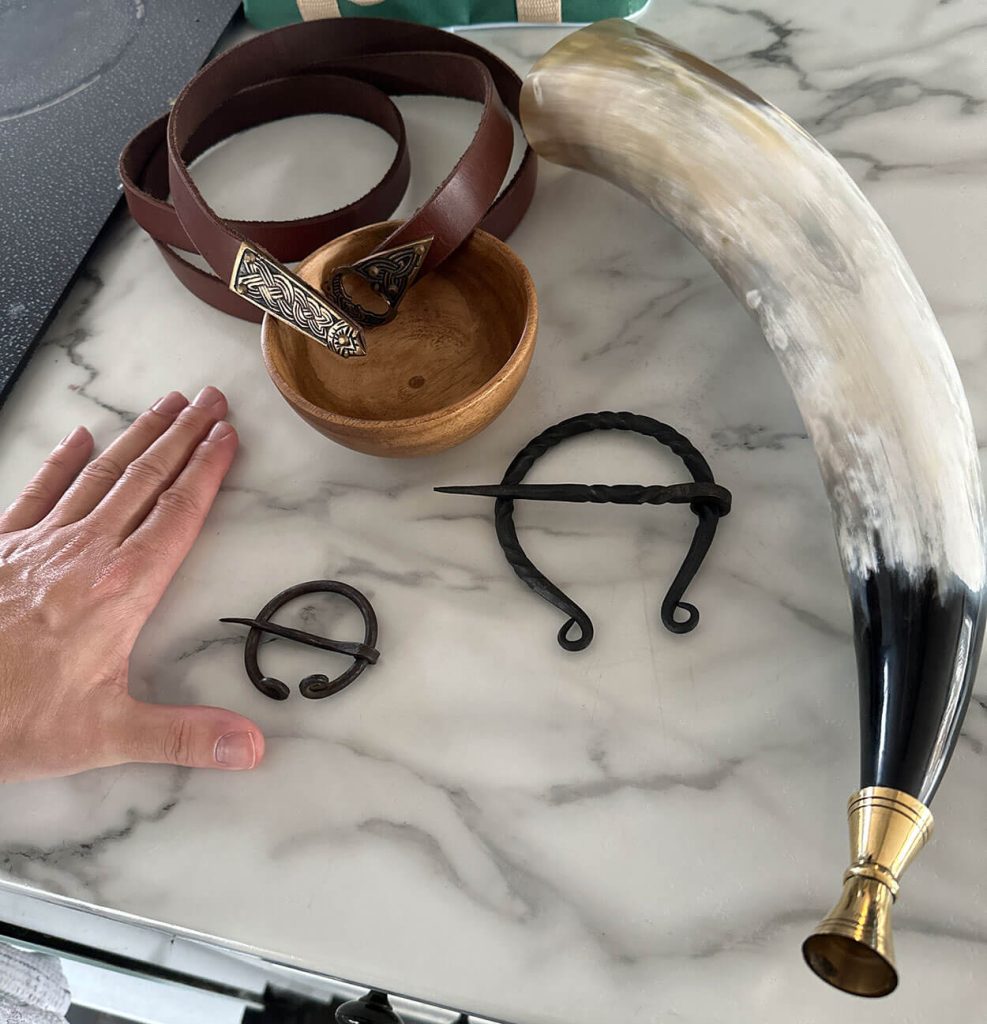
Cast; The Meet and Greet
May was largely focused on cast. Early in May, some of the core volunteers spent a day in a hotel boardroom interview people, and after reviewing the interviews, we had a cast selected. There were some late additions (when the person that emails you to ask if they can still participate has a display picture of them dressed in costume, you say yes), but finally I arrived at a room full of volunteers, all good people who wanted to be awesome Vikings! That first meet and greet went very well, and it was uplifting to see everyone together in one room, ready to go.


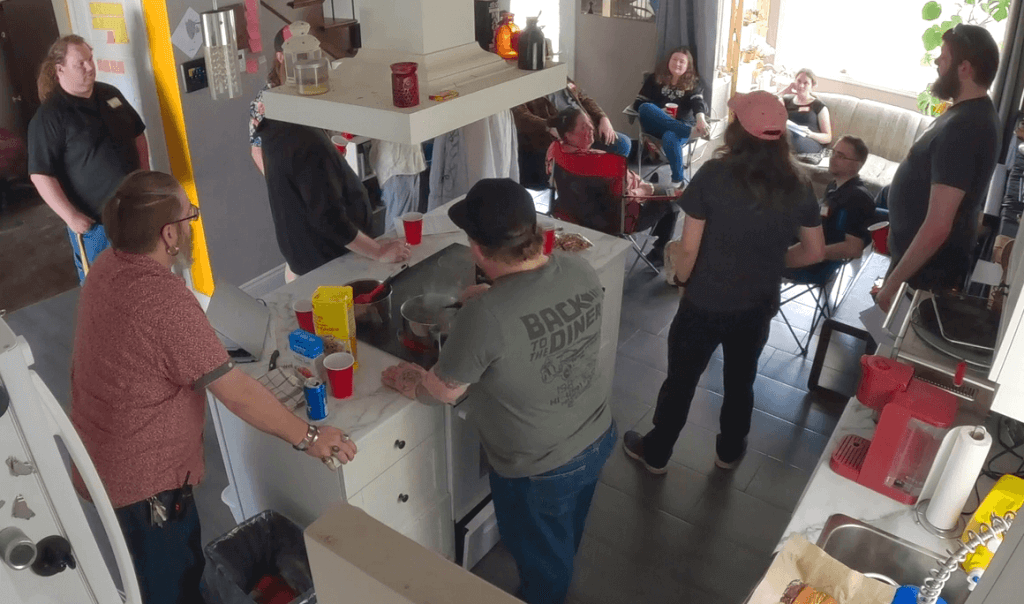
Sawdust, And Lots Of It
In the background, from January all the way to a few days before the event, there was sawdust everywhere. In between travelling, spending time with my partner, a ton of planning and content development, I made things.
By the end of the project, I had built:
- Furniture: 1 Viking tent frame, 3 large tables, 1 regular table, 2 thrones
- Props & Games: 5 shields, 1 axe-throwing target, 2 bullring games
- Cooking Equipment: 1 grill pit grill
Building these furnishings took a lot of time, but added to the legitimacy of their look, and allowed me better control over the quality. On top of that, I also purchased two additional shields from a local craftsperson, leaving me with a ton of good options.
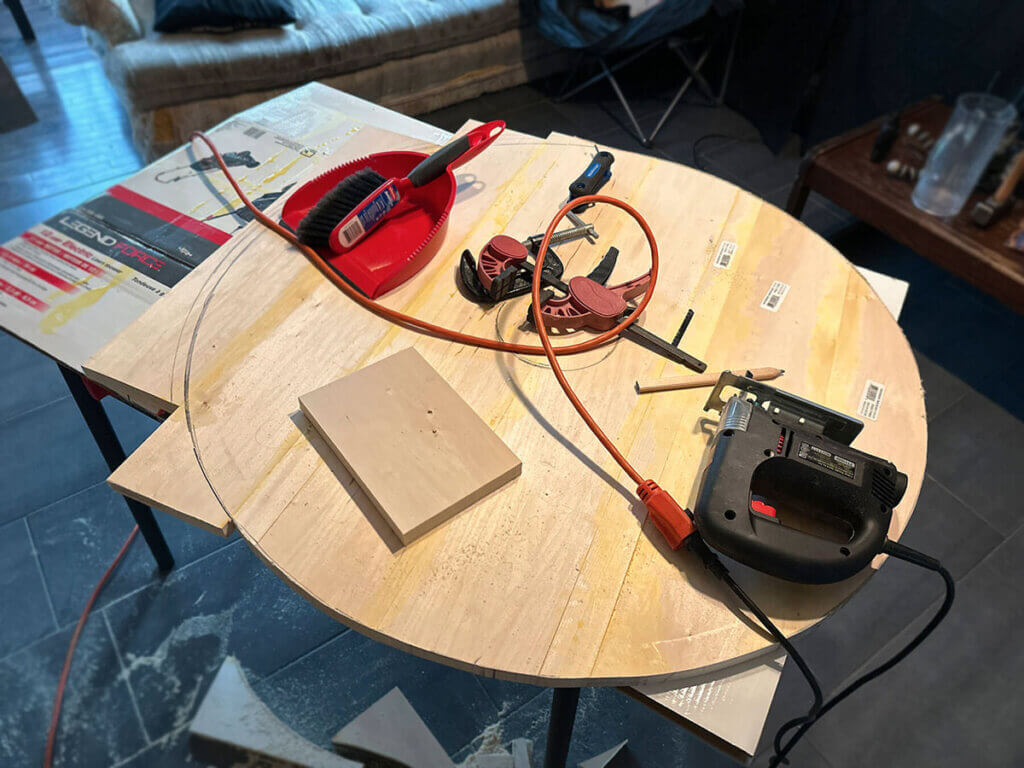

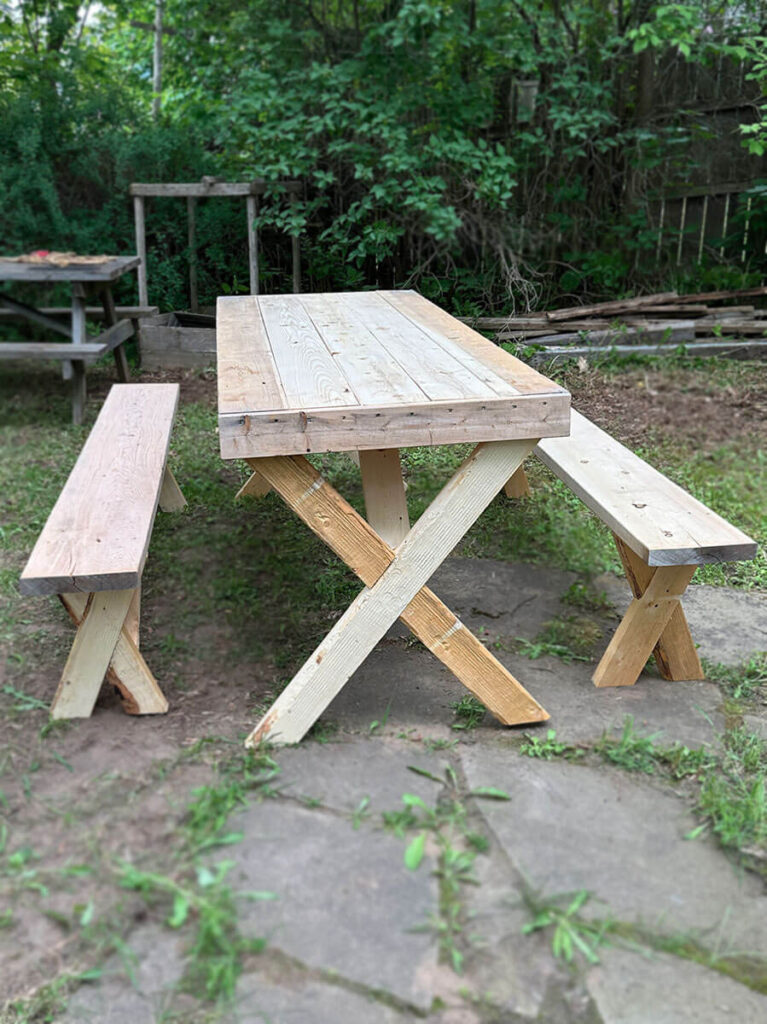

June; Three Months out
In June, I had to make some significant changes to the event structure. Finances were getting a little tight due to personal circumstances, and after evaluating the event I was trying to pull off, it seemed less likely that I’d be able to run it successfully.
June 6
Howdy everyone! Just a quick update so everyone knows where we're at. Due to some logistical challenges, I have been forced to revise the event structure into something more likely to succeed. As a result of this, there have been some changes to staffing, as well as to the overall event. The event was originally planned to be a whole event, including feast, in the woods. Currently, we are working towards getting everything lined up so that we can execute two events.
...
I know that this isn't exactly what some of you have signed on for, so if you are unavailable for one or other date, please feel free to let myself or Tom know.That month, we started having regular volunteer group sessions, to allow them time to get more comfortable with each other, get into their costumes, and generally start practicing their characters. This also let me get photos of some of them, and I started designing a series of high-quality promotional posters. Along with that, I also received my second batch of props, which looked great!

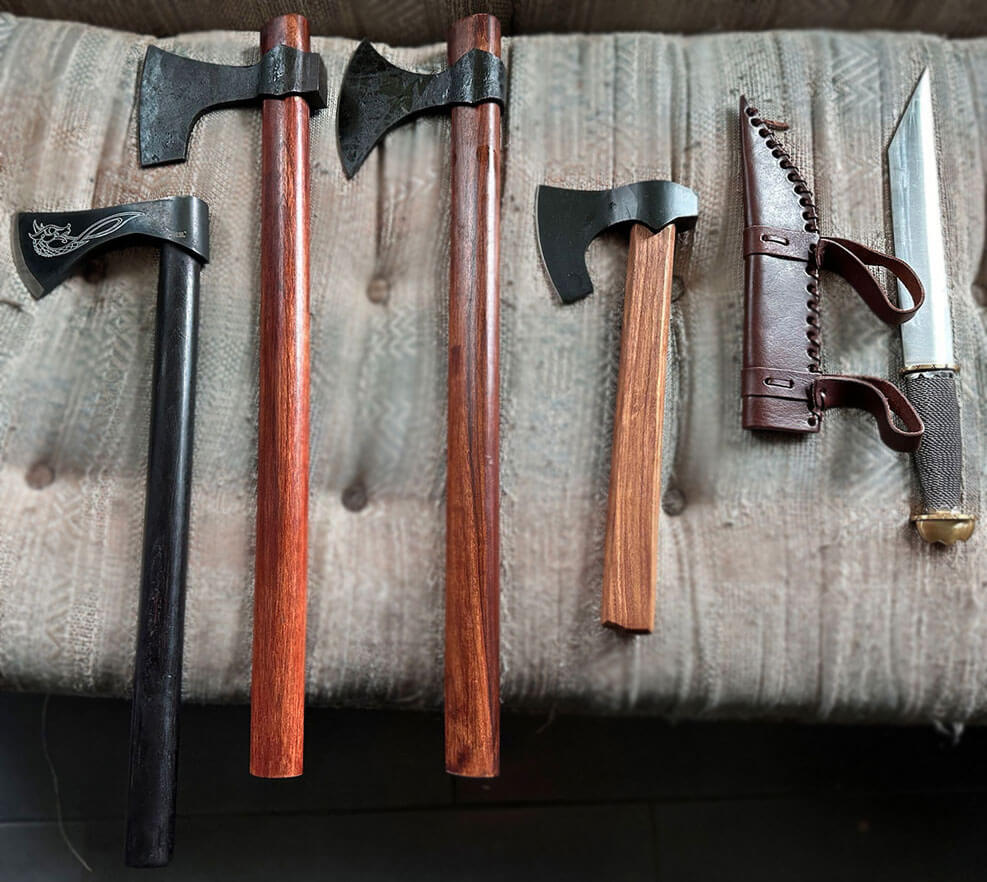
July; The Giveaway
In June, I had a casual chat with a local business owner about my event, and he suggested that in exchange for some things I had helped him with, we could do a cross-promotion. He hung some of my promotional material, and in July, I set up a ticket draw at his business.
For this, I posted on Instagram and Facebook, and after returning from a trip, I had a customer at his store draw a name to win two tickets. According to Facebook analytics, the draw posting reached a little over 350 users and drove a modest number of users to the event website.
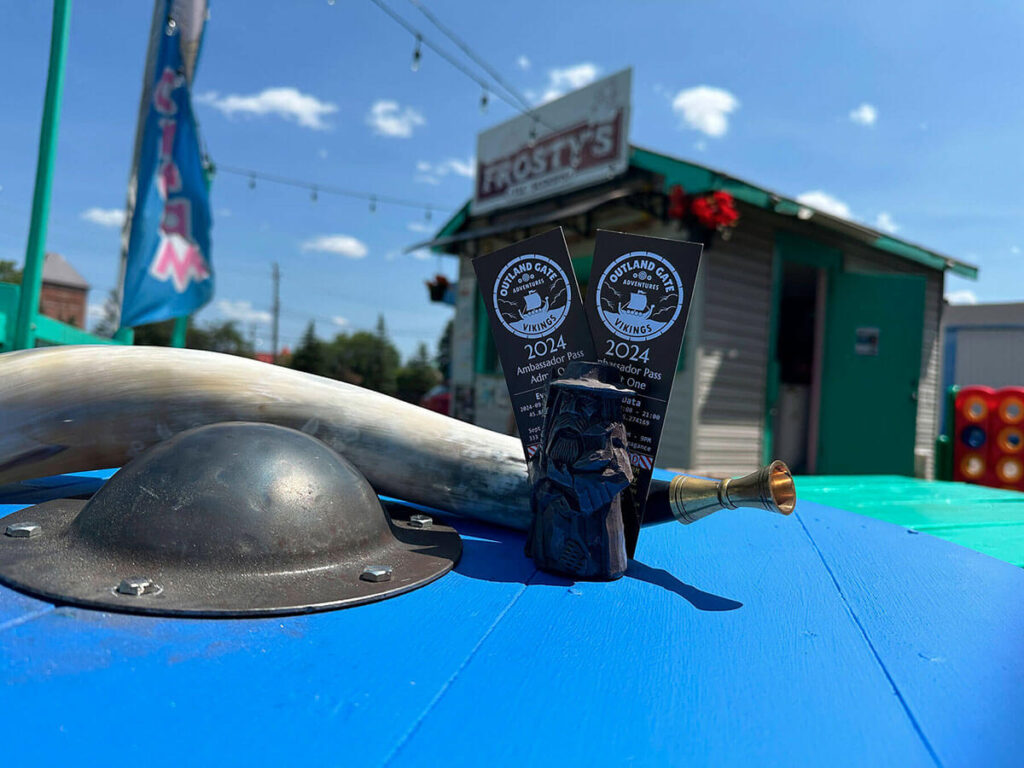
Along with this work, I also focused on developing more of the high-quality posters. This was important to me, and received a lot of attention, because I had a suspicion that good posters would grab more attention.

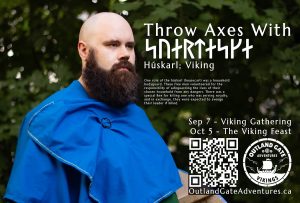

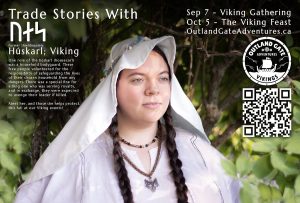
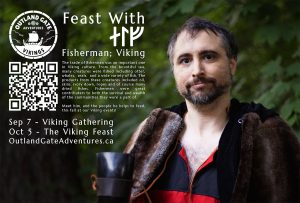
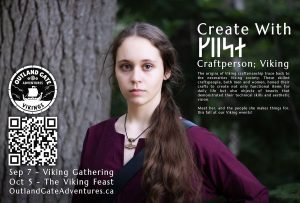

Each took approximately 4-6 hours to develop each (you can see a series of progress shots below), and I’m really proud of the work I managed to complete here, even if I didn’t get to use them for long.

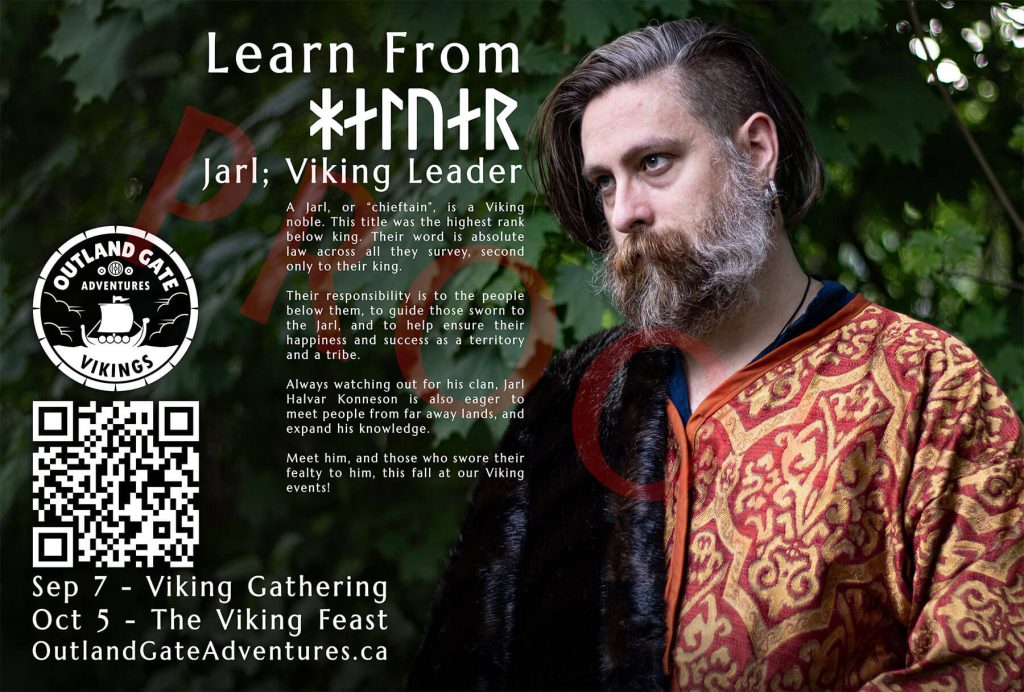

August; The Breakpoint
Early on, I had made the decision to have specific points in my schedule where I looked at the state of the event, to ground myself and evaluate if I wanted to continue to spend money. Coming into August was one of those critical moments.
Not knowing how things were going to go, this felt like a smart way to hedge my bets and allow me to be flexible in reaching some sort of event, regardless of the shape. This breakpoint in particular was about a month out from the first event, and the key criteria was ticket sales.
At this point, tickets had been on sale for over a month. Traffic to the main website was averaging 5-10 users per day, and over the last month I had over 100 unique visitors move down the funnel into the ticket page. My minimum to run the event was approximately 40 customers.
With no tickets sold, I had to make the frustrating decision to cut public sales, to allow me to shave down logistical requirements by restructuring to a smaller private event.
August 3
Howdy everyone, and welcome to the start of the long weekend!
I'm popping in to announce an impactful change in the event plan. We've now hit a planned hold point in my schedule, where I had a decision to make, based on the state of various logistical concerns and ticket sales for the event.
I've made the decision to shift from the planned public into plan B, a private event. Over the next couple of days, I'll be re-planning the schedule and event structure, and will announce more concrete dates and changes before the end of the weekend.
The short form is as follows:
- The Gathering will be adjusted, to now include the 5 course feast from the Feast event. The musician will be cancelled for this new event.
- Ticket sales are now closed, marked as sold out. In substitute, I will be offering limited (and very cheap) tickets to y'all, for the new event, specifically for family, or close friends you had originally intended to bring.
- For guests to the Gathering 2.0, we will be informing them that this is a preview. This will still give us the opportunity to make mistakes, feel out the event, and accommodates other logistics / props areas that are currently weak.
Thanks everyone for coming along for this twisty ride as we figure out this event, and I shall drop more information as I develop it!
The Setbacks
About three weeks before the event, I had three simultaneous events happen on the same day that killed all forward motion. This rapid series of failures was emotionally challenging, but also a stark reminder of how many moving parts are involved in event planning.
A partial quote from the message I sent my volunteers:
- Insurance is a no-go, after taking two months to answer some simple questions. 🙄
- Food logistics mean we won’t be selling extra seats, nor doing the feast in the woods. Burgers and what not are looking to be the name of the game.
- The event site that I thought was a lock has become.. less so.
And that was it, the event plans were at a standstill. But why does such a short list kill it?
First problem: insurance. I had been trying to get a quote from a special events insurance company for over two months at this point, but they had been putting me off with a message about high quote volume. As they were the only company I was aware of that might insure this kind of event, this was something I had on my list as a high risk from the start, which is why I had been repeatedly asking for a status on this quote.
When they finally got back to me, the answer was basically “get other liability insurance for the premises and axe throwing somewhere else, and then we’ll talk”. Knowing the owner of the site I was using, problem one, the premises insurance, wasn’t going to be something I was able to solve rapidly, if at all. After looking into problem two, the axe throwing insurance, that was also going to be a non-starter, because I needed something I didn’t have set up to that point: an insurance broker.
Second problem: food logistics. At this point, I had almost completed the application for the temporary food permit, however I needed a few final pieces of information from my chef, who had a significant personal emergency that same day. With the time remaining before the event, I was unable to proceed with the application, and about to cross the drop dead date.
Third problem: the event site. The owner of the site had mentioned approximately two months before that he was planning to have a bulldozer on site to clear extra camping sites. When I checked in with him two weeks before, this still wasn’t locked in, but I had confirmed that we would still be able to set up and use the site for our August 24 practice session, as well as our event on Sept 7.
With everything else stacked up, I decided it was necessary to check in again and re-confirm our use of the site. After some back and forth, I was sensing some waffling on the practice session date, and then the owner started nudging me in the direction of a nearby campground instead. At that point, I called it done on the event site, because that firm commitment had evaporated, and with it, so had the practice session that was my minimum requirement before I ran the event for guests.
So That Was It
After nine months of planning, at the end of that day, the event I had left was a practice session with a few friends and family as the audience. Due to multiple factors that all tie back to lessons I will talk about below, I had a stack of volunteers that needed practice, a pile of things to make, and nowhere to put the event. August 13 was a very hard day, and after sending a long message to the group, I took the rest of the night off.
While it was disheartening, I felt compelled to salvage something meaningful. I decided to move forward, aiming to give the volunteers closure on the first season while also capturing promotional photos and videos. I had a talk with the campsite owner, and then revised the pieces I had left into a Practice+, a practice session with a very small audience of people closest to the volunteers, allowing them to have people to act for.
August 14
I know this has been a journey, and we're not where we were hoping to be. I appreciate all your time in this, and for any of you, if you want to bow out, no hard feelings. This is certainly not where I was hoping to be, and at this point I'm just aiming to salvage any bits from it that I can use towards the next one we try.
I’ll be reaching out to each of you over the next week, to check in. Feel free to message me ahead of that, but I want to get a chance to talk with each of you.
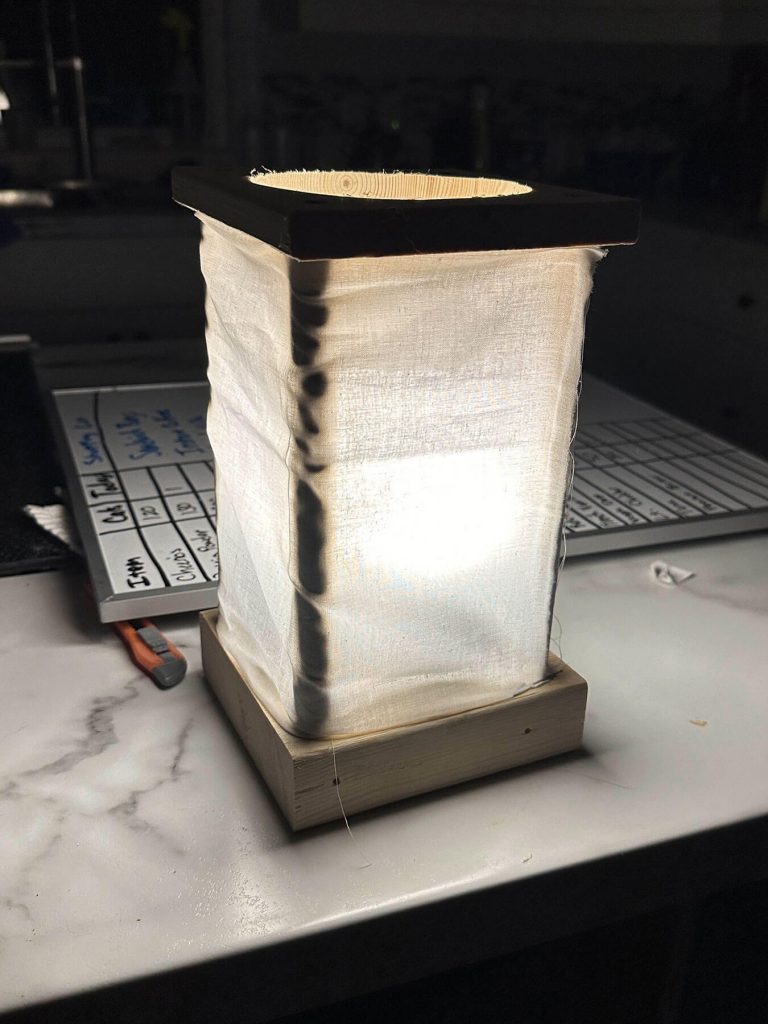
Sept 4
There won't be a session tomorrow, as I'm working on final prep before site setup. The loose itinerary is:
Approx 2 PM, get waivers signed, people in costume. After everyone's ready to go, I'll run an intro and then we go play some games and see what's fun. We're playing this by ear, so if y'all want to do history of war, demonstrations, whatever, we can put them in as well.
Around 5 or so, depending on how things are flowing, food opens up, we do supper. After this, we can go revisit a game, or something else, depending on what everyone's feeling.
Dusk, fires are lit, and we transition to stories. There are a few assigned out to people already, and some improv stuff as well (like Chris). This is another opportunity to slot in demonstrations / histories, things like that.
Wrap by 8:30 or 9, depending on how it's feeling, and then after that, everyone is welcome to depart, hang out, in costume or out. There'll be some extra food floating around as well, for anyone feeling a snack.And then there we were, two days before the scheduled event, and we had a tropical storm warning suddenly issued from Environment Canada.
Sept 5
Aight everyone, so. I've been monitoring the weather, and Environment Canada has now issued a special weather statement for rainfall this weekend, calling 30 - 50 mm. I was planning to tarp some areas over, but that's also more than I was expecting.
I'm going to continue monitoring, but tell me what y'all thing about the weather, and if / what'd stop you 🙂Sept 6
The radar sucks, the forecast isn't getting better. Thanks everyone for playing, the game is called on account of horrible horrible rain.That was it. The conclusion of almost a year of work ended up being a rain out. Of course, making this call had to be done. Even though it was an emotional blow, ultimately the safety of the volunteers was most important, and second to that, the enjoyment of everyone involved.
Reaching that point and not be able to run an event at least marked a conclusion, and with that I could move into the post-mortem work, because I knew there were lessons to unpack in the days and weeks that followed.
Finances
At the end of the event, I pulled together my financial statements from the corporation this year. All told, this lesson cost approximately $27k of the original $30k I had laid aside, and while the final result was a non-event, I feel positive that I learned a lot of what I needed to from this prototype.
The top expense was equipment, meaning I have a lot of hard resources I can use towards the next events. Below is a table of the top cost centers, with some explanation of each.
| Expense Item | Total Cost | Details |
|---|---|---|
| Equipment | 13,899.59 | Hard resources, reusable for future events. |
| Staff Costs | 4,183.85 | One time fees, for volunteer organizations, consultants, and contractors. |
| Costumes | 1,839.67 | This is only purchases I could 100% say were costume related, like fabric. Props were grouped under equipment. |
| Staff Meals | 1,430.66 | As part of volunteer appreciation, there were meals provided for things like the cast screening, full group gatherings, and planning sessions. |
| Advertising | 1,420.67 | Ad spend, printing services, and other related costs. |
Points Of Failure & Learnings
As part of preparing for this blog post, I sat down and wrote out a list of the points of failure I encountered. Some of these were avoidable, and some of them were unknown unknows (things we are neither aware of nor understand), but all of them tie into valuable learnings for any future events I plan.
Leadership & Delegation
While I made some good choices here in picking specific people for tasks, there were definitely some problems in this area.
– Mismatched Responsibilities
One of my biggest issues was not understanding a core volunteer’s availability and ability to commit, before I put them in charge of a critical task.
As a result of this choice, I later on in the event planning had to start partially taking over those responsibilities myself, and with my already heavily committed list of work, the quality suffered greatly.
– Social Media Management
Early on, I decided not to hire a social media manager. I assumed I had the skill to take care of this, and while this was true, what I lacked was the time. It was frustrating to know I needed more posts, and being stretched so thin led to inconsistent cadences, because I was slotting it in whenever I could, or I didn’t have the time to author the kind of content I wanted to produce.
I don’t know how much of an impact this had on my overall marketing, but I suspect there was some, since the key to a good social media presence is as much about consistently posting as it is about producing good content.
– Sponsor What?
One of the things I looked for early was sponsorship opportunities. Lacking event promotional materials and under time pressure, I lost track of this thread early, and never managed to close a sponsorship for this first event. While I had one successful partnership, that lack of a sponsorship likely cost me opportunities for promotion, as well as actual cash.
– The Time Crunch
While my primary goal was to learn how to run an event, my secondary one was to run an event this year. I didn’t want to lose momentum, and I knew that it was important to get over the first hurdle of actually running something, so I could improve and hopefully understand the demographics of my audience.
The only problem is that there were so many pieces that needed to be worked out, built, crafted, planned and practiced that I always felt under pressure to get something done before the weather made running an outdoor event a non-starter. The largest challenge was keeping the logistics running, while also making sure I was on track with the actual building, since there is no way to really speed up building except by bringing in extra hands.
Lessons
I did a reasonable job controlling and adjusting scope through the whole event, but I need to delegate more. Effective delegation starts with clearly defining roles, setting expectations, and ensuring commitment. While I’ve been cautious about delegating in the past, this event taught me that handing off tasks is essential—especially for time-intensive efforts like social media management and sponsorship outreach.
For future events, now that I have a better understanding of the work, I plan to prioritize hiring or assigning dedicated roles for critical tasks, with specific deliverables and timelines. Trusting the right people with clear responsibilities will free me up to focus on strategy and problem-solving, and should lead to a more successful event!
Logistics And Planning
– Your Venue; My Challenge
This is a twofold problem: having to rely on a venue I didn’t control, and not planning a solid backup option for my venue early enough. When my initial venue fell through, this left me scrambling for a new one, which would have been a much bigger problem if tickets had already been sold.
Lesson
Location location location. I dislike how something so critical is outside of my control to the point where it could make or break my event, and so I plan to try and acquire either a lease or ownership of land in the future. Doing this will also enable me to start building permanent structures, adding authenticity to the events, as well as providing better resilience in the case of poor weather.
In the short term, if I end up running an event again before I can get a firmer handle on the location, I’ll ensure a more formal agreement is in place, I will have insurance in place for event cancellation, and an alternative venue in mind.
– What Are We Doing?
As I was working through the logistics, and trying to figure out what I could actually execute, I was being flexible. The downside of this is that I had to continue to change the format and content of the event, by splitting it up, and then joining it back together. This contributed to planning challenges, as well as caused some confusion for the volunteer staff.
I ultimately set the event date too late. Uncertainty about the venue, inexperience, and competing events delayed the announcement. While it may not have caused zero ticket sales, setting dates earlier might have led to a few sales.
Lesson
I feel a large part of this lesson was learned just in figuring out what kind of event I wanted to do. The key point is locking down Plan A and Plan B, and getting a date set sooner.
Setting a key metric and breakpoint was a good idea, and a better idea would be to communicate to the staff that there was a breakpoint set, so they know to expect there may be changes.
Now that I have a better feel for local events and am paying more attention to weather patterns, I feel like I’ll be well able to set a much better plan for the next event.
– Backup Plans
– Backup Plans
– Backup Plans
While I had some backup plans for things like inclement weather (to a point, not a tropical storm), I missed on other identified risks (loss of venue). One of the mistakes I made was not working harder to ensure I had some idea of a backup for critical elements like venue.
Lesson
Now that I’ve been through the process once, I’ll be able to bolster my planning for the next event, and work out more backups. These don’t have to be fully fleshed out, but it’s helpful to have some bullet point ideas on how to solve issues you might expect.
Strategy And Execution
– Don’t Mess With The Best
When building a business, one of the largest advantages of being later to the market is letting other people make the first mistakes. In my case, the proven strategy was the Renaissance Faire, and how it is structured. When you change the business, you open the door to more mistakes, because you’re walking the path not tread, and this for me was a mistake.
What I tried to do was cut down on the elements in my event, to make it simpler. What I did was change it from something people understood generally in one word (renfaire), to something that had to be explained (Viking Gathering, Viking Feast). I lost the advantage of easy marketing, and of the customer having a built in concept for understanding what I was offering.
Lesson
Don’t. Change. The. Core. Strategy.
The next event will follow the core renfaire model because it’s what people already understand and expect. There’s a specific structure to how you price and market it, to how it flows, and to what people expect, and it’s a structure that has been proven to work by hundreds of existing businesses. To be successful, all I have to do is replicate that.
Once I have it up, and have a brand established, it gets easier to provide variations and tweaks to the format, but as a beginner, those changes likely were a headwind for getting my business going.
– Partnerships Are Valuable
I had one partnership that happened organically, just in conversation with the owner of a local ice cream stand. He was very supportive of the event, and helped immensely by proving a sounding board for some of my planning, as well as helping to advertise. We even ran a ticket draw promotion, which got people to his stand, boosted event visibility, and also helped generate qualified leads for future events.
I have several ideas for cross-promotion for the future, and I will definitely be looking for other opportunities to partner with local businesses, because it helps maximize the effect of advertising spend or effort either of us make.
Mindset; Adaptability and Resilience
Adaptability and resilience were my lifelines throughout this event-planning journey. In this adventure, I had to embrace a fluid mindset, and as you’ve seen through this post, adapt my plans to adjust to each new challenge.
Flexibility wasn’t just a strategy; it was a necessity, allowing me to turn roadblocks into new paths. Whether it meant changing the format, scaling back the logistics, or reimagining the concept entirely, I remained committed to delivering something meaningful—even if it wasn’t what I initially envisioned.
Adaptability needs to walk hand in hand with resilience. It wasn’t just about finding alternative plans; it was about managing the emotional toll that setbacks and criticisms can bring. There is a definite emotional impact when something you’re planning goes wrong, or when feedback gets a little too personal, or when you’re just stressed and time crunched.
There were moments when I doubted my ability to work the problem, to get to a solve, when the effort of just trying to hold it together felt overwhelming, and I seriously considered canceling at least half a dozen times. Business is tough, and doubt can be loud, but I found that stepping back, taking a breath, and regaining a sense of rational perspective allowed me to keep moving.
The lesson I had to constantly remember is that it’s okay to have doubts. In fact, it’s inevitable. But what makes the difference is persistence—the ability to keep trying, re-evaluating, and problem-solving. Flexibility may keep you on track, but resilience is what ensures you don’t quit before the finish line.
As I move forward, I’ll bring these qualities with me, knowing that setbacks are just part of the process, not a reason to stop. These traits weren’t just helpful—they were essential to making progress, even in failure.
Final Words
This blog post, as long as it is, is only the very short version of what a year of work looks like. It was a very long and busy year, filled with non-stop work, as well as trying to balance my relationship and job responsibilities. I think this had the largest impact on my social life, which often had to take the back seat to make room for the work I was doing.
This was a sacrifice I was willing to make, because I was driven to get to the event, and while I didn’t get to where I wanted, I definitely learned many of the lessons I needed to (and I’m kind of glad I didn’t sell tickets, because being rained out with 100 customers sold would have been way more challenging).
Looking forward, while I’ve been slowly piecing this blog post together, I’m already thinking about the structure and logistics of the next event. I’m highly optimistic that what I do will be significantly more successful, and I’m definitely happy that I’ve learned the lessons I have so far.
I hope that this candid look at my first event will help some of you avoid similar mistakes as you work on your business ideas, and I wish all of you the best of adventures.
Cheers!

Leave a Reply